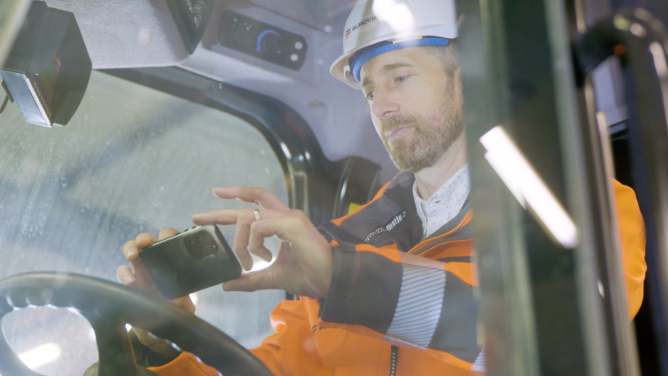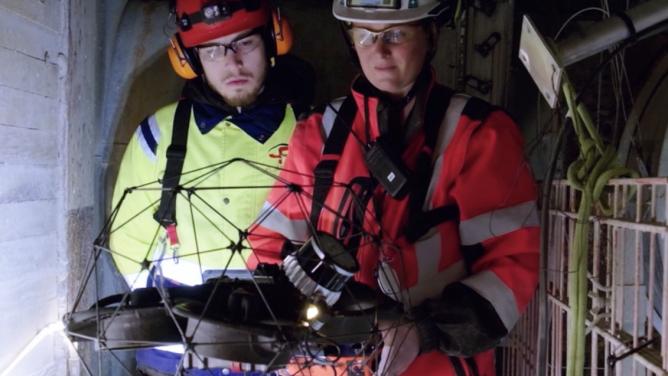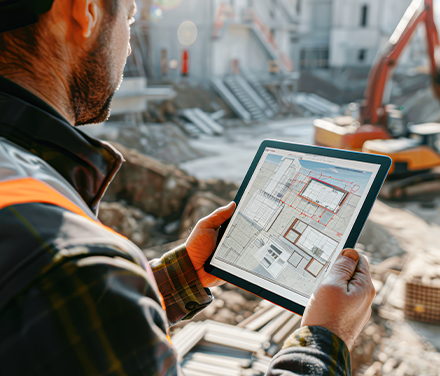The digital twin of the building, the key to smart cities?
The experience acquired in buildings, mobilizing connected objects, and digital twin in the services of truly intelligent uses can inspire “smart cities”.
An automated ecosystem overflowing with technology, plus self-driving taxis, smart traffic lights to regulate road traffic, streetlights that only come on when needed, and sensors measuring air quality, traffic noise, and soil moisture… You may already be familiar with the smart city “classics”. It’s an urban center where everything runs precisely and nothing is left to chance, and where every need has been taken into account and satisfied even before it’s been expressed. Immense amounts of data are constantly collected and processed using artificial intelligence, all operating through a digital mock-up that allows countless scenarios to be tested before being deployed in the real-life city.
In this ideal vision of the smart city, the digital twin – an omniscient pilot powered on data gleaned from the real world – plays a central role. Like an extension of BIM but with a longer shelf life, the digital twin has made a name for itself in the industry and has been gaining ground in the construction sector over the past several years. What’s more, it’s also become a very powerful tool for urban infrastructure. What made it so popular in the industry (anticipation, optimization, modifications throughout the life cycle…) indeed makes it relevant on a building and – now, too – a smart city scale. While it’s not vital for the latter, it has been proven very useful – and more and more cities are integrating it into their vision of the future. According to the market-foresight advisory firm ABI Research, this technology could be deployed in more than 500 cities around the world by 2025.
Some cities have already taken the plunge. In February 2020, Sydney launched its giant digital twin which covers 8,500 km², more than 500,000 buildings, and 20,000 km of roads. It aims to make it easier for locals to get about, enabling them to view public transport options in real-time, check timetables and their occupancy rate. Singapore also has its own digital twin powered by a myriad of data from sensors measuring air quality and temperature, as well as other information like building size, roof surface, energy consumption, and amount of sunshine. All this is used to identify which buildings in the city are most suited for installing solar panels.
While the digital twin emerged in the early 2000s, recent innovations mean data can be integrated and processed in real-time thanks to the Internet of Things, 5G, and artificial intelligence.
The role of the smart building
Continuous data collection which feeds the digital twin and the automated city is closely linked to the rise of the smart building, itself designed to optimize and self-regulate thanks to the information it collects around the clock in the real world. In fact, sensors in urban buildings alone don’t make buildings and the city “smart”. Sensors in urban furniture (roads, signage, lighting, etc.) are equally responsible. The digital twin of a building can be used to anticipate and control lighting, energy production and storage, and predictive maintenance. During the third edition of the Building Beyond Festival, Laurent Papiernik, CDO of Gares & Connexions, explained how SNCF train stations are now able to “report” directly on the current state of their facilities, using this data to optimize maintenance operations.
When used for energy production and storage, buildings can also act as an interface on an urban scale, by serving as local micro-grids or even automatically limiting consumption when the city’s energy grid indicates that it’s at overcapacity. In Newark, New Jersey, Honeywell is working with the city council to upgrade 17 public buildings, including City Hall and Symphony Hall, to make them more energy-efficient and reduce the city’s energy costs by 36%. Let’s not forget that buildings are responsible for 40% of global energy consumption, and therefore play a key role in reducing our carbon footprint.
Smart cities aren’t always that smart
However, the ideal vision of a fully automated smart city gave rise to projects that failed as spectacularly as they promised to be great. Take Google’s Sidewalk Labs in Toronto, the billion-dollar smart neighborhood was supposed to run on an army of sensors and cameras, yet was scrapped last year amid privacy fears over residents’ data.
Meanwhile, with self-driving cars, smart parking, and green energy microgrids, the Union Point project in North Carolina was presented as revolutionary – and yet came to precious little. It will ultimately just become another conventional neighborhood dotted with a bit of tech. And there’s a never-ending list of stories about new, tech-clad Asian cities that are practically ghost towns.
What all these projects have in common is a marketing-lead, teleological vision of the smart city. Sold as a revolutionary, futuristic project, they’re enticing on paper yet unrealistic and impractical in real life. An extremely digital city full of gadgets is of little interest to its residents if it doesn’t respond to real issues. Unlike a smartphone, whose features can be used to develop countless apps, a city has only a limited number of smart services that can be deployed in reality. Increasing the number of sensors doesn’t necessarily lead to an increase in the number of relevant services for locals. However, even the most spectacular smart city projects don’t necessarily involve a digital twin. While some view the latter as a digital gadget or perhaps an all-powerful tool giving unlimited control, it could bring water to the mill of this unsuccessful vision of the smart city.
Digital twin best practice
Contrary to this type of pitfall, the way in which smart buildings were used during the pandemic offers fruitful leads. Far from the above idealism, the vision was pragmatic, progressing step-by-step to solve concrete problems. For example, in factories and warehouses where essential workers worked, artificial intelligence sensors and algorithms were used to monitor social distancing, improve floor layout to limit contact, and alert workers who may have been exposed. One technique, measuring CO2 concentration indoors in real-time, was recognized as one of the best indicators of the risk of exposure to the virus. Similar techniques could be used in a digital twin device in the future, to analyze how employees move around the office and optimize lighting and heating.
With the urgent crisis at large, public authorities also had to make do with the means at hand. Replacing all devices with 5G equipment isn’t needed for an optimized urban environment: existing cameras can be used when paired with artificial intelligence. Take the Duplex A86 tunnel, thanks to AI developed by Cyclope.ai, the existing cameras will soon be able to inform connected vehicles of traffic conditions and any accidents. This same principle is used in Singapore to identify when barriers demarcating road works have been inadvertently removed or vandalized, thus posing a danger to the public, as well as to detect free parking spaces – both without the need of installing new sensors.
While ideal for performing realistic simulations, when used intelligently the digital twin can be an excellent tool for identifying the most useful services that can be implemented straight away using the means available.
While projects like Union Point or Sidewalk Labs were over-idealistic, their downfall also came from a desire to rush things, from a technological solutionism that tends to think that we can simply update how a city is run, as if it were an operating system. If a smart city is to start with pragmatic responses, it can only be built over the long term. It’s only by gradually implementing an intelligent device that a true digital information system for the city will emerge.


